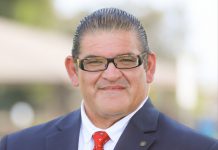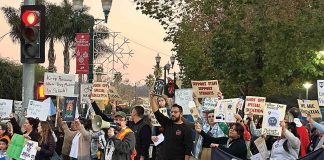For seven years in the 1970s I taught elementary school at Hall District School in Las Lomas. My students were virtually identical to those massacred in Uvalde, Texas. Apparently, “my” children watched for almost an hour while their teachers and friends were being blown to unrecognizable pieces, waiting in terror for their turn. I’ve been crying a lot, and like almost everyone, I am looking for solutions.
Of course, we must have much stricter gun control and absolutely no assault rifles owned by civilians, but there is an additional solution that is seldom mentioned.
After teaching elementary school, I taught some 25 years in “at-risk student” high schools here in Watsonville, and I got to know the families pretty well. These students are a very diverse group, but generally, the more dysfunctional students shared these characteristics:
1. Chaotic home life.
2. Neglect.
3. Lack of positive male role models.
4. History of domestic violence.
5. With the help of a female counselor who was a victim of incest, I learned that roughly half of our girls and at least 20% of our boys were victims of sexual abuse by someone that was supposed to protect them. Sexual abuse produces profound emotional issues. My unscientific opinion is that most school shootings are committed by victims of sexual abuse. In boys, sexual abuse creates unmitigated rage.
Additionally, when neighborhoods are not safe, children who are unhappy at home often fall in with the criminals who control their neighborhoods.
In my experience, poverty is not a major cause of unproductive and antisocial teen behavior. Occasionally, there were single parents that had to work two full-time jobs to pay the rent and this resulted in neglect of their kids, but this was uncommon. In addition to low-income students, I also taught the children of doctors and lawyers in continuation schools.
These factors (dysfunctional homes and neighborhoods controlled by thugs) can actually produce destructive teens and if the resulting emotional issues are not dealt with, they often become self-destructive, antisocial adults.
So, students with a propensity toward violence are in our schools today, and the high school years are the last real time our community will be able to help them to deal with their issues and thus protect us all. Remember that the original purpose of public education is to educate children to become productive members of society. Correcting anti-social behavior is clearly within the mandate of public schools.
As my title says, “hurt people hurt people.” Our society has to do a better job at protecting children and when they have experienced trauma, giving them a better opportunity to heal or they will pass their hurt on to others.
Here are my suggested solutions to reduce mass shootings:
1. Stop early child abuse.
Years ago PVUSD had a program where two counselors did a puppet show for kindergarten classes about child abuse. Afterwards, students who wanted to talk to the counselors went outside the classroom, and many abusive situations were interrupted. This may seem like an intrusion on family sovereignty, but the early years are profoundly important in child development, and if we want to raise healthy adults, child abuse must stop. In many jurisdictions, it is nearly impossible for Child Protective Services to remove a child from their abusive home, and the foster home system has long been a major source of child abuse. The state has to do more to protect small children, because they are all our children.
2. Violence-prone teens should be given early intensive therapy.
Once the damage is done to innocent children through emotional, physical and sexual abuse, the resulting violence-prone students must have an opportunity to work out their issues with effective therapy. Students exhibiting violent behavior are often on probation and in most jurisdictions this means just being locked up. Fortunately, here in Santa Cruz County, the Probation Department is a national leader in “wraparound support” and restorative justice. “Wraparound support” means that instead of just locking kids up with criminals, they are mandated to spend most of their after-school time in group meetings and counseling. Their families are also involved in counseling, which is especially important, so the siblings do not follow the same self-destructive path. Additionally, continuation high schools should retool to recognize that their mandate is more than getting students a diploma, and starts with helping students recognize and change their bad habits so they can become productive members of society.
Mass murderers do not spring up like mushrooms after a spring rain. They have been abused and are produced by dysfunctional families and (for low income kids) cultivated in neighborhoods that are controlled by criminal elements. Once the damage has been done at home, schools and probation departments must do a better job of recognizing early trauma and help guide antisocial teens to understand their trauma and make better choices. If we, as a society, want healthy neighbors, the first step is to reduce child abuse.
Don Eggleston is a retired Pajaro Valley educator. His opinions are his own and not necessarily those of the Pajaronian.













